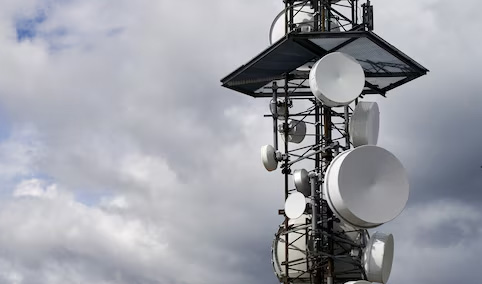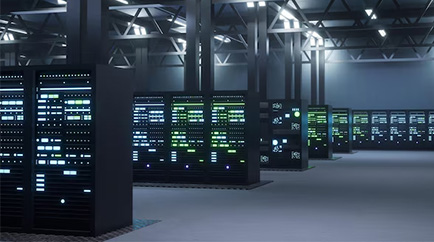By Echo | 04 March 2025 | 0 Comments
What Is a Patch Cord Used for?
A patch cord, commonly referred to as a patch cable, plays a crucial role in networking and telecommunications by enabling short-distance connections between electronic or optical devices. Whether in data centers, fiber optic internet infrastructure, or enterprise networks, patch cords ensure seamless data transmission, offering both flexibility and reliability. Understanding their applications in fiber optic systems, structured cabling, and telecommunications highlights their indispensable function in modern connectivity.

Telecommunications infrastructure heavily relies on fiber optics to maintain seamless communication. From central offices to data centers, fiber optic patch cords interconnect critical equipment, ensuring reliable signal transmission.
Data centers depend on structured cabling solutions that incorporate fiber optic patch cords to maintain efficient operations. These cables connect various components within a data center, ensuring high-speed communication and streamlined cable management.

Choosing the right fiber optic cable significantly impacts network performance. Several factors must be considered to ensure optimal connectivity and minimal signal loss.
How Does a Fiber Optic Patch Cable Facilitate Connectivity?
A fiber optic patch cable serves as a bridge between network components, transmitting high-speed data with minimal loss. Unlike traditional copper cables, fiber optics rely on light signals, making them ideal for high-bandwidth applications. These cables connect various network devices, ensuring reliable communication across structured cabling systems, fiber optic internet setups, and telecommunications networks.Connecting Patch Panels to Network Equipment
In structured cabling, fiber optic patch cables establish connections between patch panels and network switches or routers. This setup allows for efficient network management, enabling easy reconfiguration without altering permanent cabling infrastructure. The use of high-performance fiber optic patch cords ensures optimal signal integrity, minimizing disruptions in data flow.Direct Connections in Fiber Optic Internet and Enterprise Networks
Fiber optic patch cables are also used to connect devices directly to network ports, ensuring high-speed internet access with minimal latency. In enterprise environments, they link servers, storage devices, and workstations, optimizing data transfer rates and enhancing overall network performance.Why Are Fiber Optic Patch Cables Essential for Telecommunications?

Telecommunications infrastructure heavily relies on fiber optics to maintain seamless communication. From central offices to data centers, fiber optic patch cords interconnect critical equipment, ensuring reliable signal transmission.
Role in Optical Distribution Frames and Transceivers
Fiber optic patch cord plays a vital role in connecting optical distribution frames (ODFs) with optical transceiver, enabling efficient signal routing. High-quality fiber optic patch cables, such as those offered by Rollball, provide superior performance with low insertion loss and high return loss, making them ideal for high-speed optical communication.Integration in Multiplexing and Demultiplexing Systems
Advanced telecommunications networks use fiber optics for multiplexing and demultiplexing, where patch cords connect wavelength division multiplexers (WDMs) to enhance data transmission efficiency. This ensures optimized bandwidth utilization, reducing network congestion and improving signal integrity.How Do Fiber Optic Patch Cables Support Testing and Troubleshooting?
Beyond permanent network installations, fiber optic patch cables are essential for diagnostics and troubleshooting, allowing technicians to identify and resolve connectivity issues efficiently.Temporary Diagnostic Connections
Network administrators and technicians use fiber optic patch cords to establish temporary connections for testing purposes. Whether analyzing signal integrity or measuring loss, these cables facilitate seamless diagnostic operations without disrupting the main network infrastructure.Loopback Testing for Network Port Validation
Loopback patch cords are specifically designed for network port testing. By creating a return path for the signal, these cables allow technicians to verify the performance of fiber optic transceivers and switches, ensuring error-free communication within fiber optic networks.What Role Do Fiber Optic Patch Cables Play in Data Centers?

Data centers depend on structured cabling solutions that incorporate fiber optic patch cords to maintain efficient operations. These cables connect various components within a data center, ensuring high-speed communication and streamlined cable management.
Server-to-Switch Connectivity
Fiber optic patch cables are used to link servers to top-of-rack (ToR) switches, creating a high-bandwidth connection that supports data-intensive applications. Rollball provides premium fiber optic patch cables with exceptional signal transmission quality, reducing latency and enhancing overall network efficiency.Storage and Cloud Computing Integration
Cloud service providers and storage networks utilize fiber optics to handle massive data transfers. High-performance fiber optic patch cables ensure reliable connectivity between storage devices and network infrastructure, optimizing data retrieval speeds and maintaining system stability.How Do Fiber Optic Patch Cables Improve Flexibility and Network Adaptability?
The versatility of fiber optic patch cables allows for dynamic network configurations, making them essential in ever-evolving technological environments.Temporary and Portable Connections
Patch cords provide quick, temporary solutions for events, presentations, and emergency setups. Their plug-and-play nature ensures seamless integration into various network architectures without requiring extensive reconfiguration.Customization for Specific Network Requirements
Available in multiple lengths, connector types, and color-coded options, fiber optic patch cables can be tailored to meet specific networking needs. Whether requiring SC, LC, or MPO/MTP connectors, selecting the right fiber optic patch cable enhances both efficiency and cable management.What Should Be Considered When Selecting a Fiber Optic Patch Cable?
Contact an Expert
Choosing the right fiber optic cable significantly impacts network performance. Several factors must be considered to ensure optimal connectivity and minimal signal loss.
Connector and Cable Type Selection
Fiber optic patch cables come in various connector types, including LC, SC, ST, and MPO/MTP, each suited for different applications. Additionally, selecting between single-mode and multimode fiber optics depends on transmission distance requirements, with single-mode being ideal for long-distance communication and multimode for short-range, high-bandwidth applications.Signal Integrity and Performance Reliability
High-quality fiber optic patch cables, such as those from Rollball, feature superior construction that minimizes insertion loss and enhances signal clarity. Investing in premium cables ensures long-term reliability, reducing network downtime and maintenance costs.Compliance with Industry Standards
Ensuring that fiber optic patch cables meet industry standards for performance and safety is crucial. Rollball manufactures fiber optic communication products that adhere to stringent quality control measures, offering transceivers and accessories that deliver exceptional performance at competitive prices.Why Fiber Patch Cable Matters?
Fiber optic patch cables are fundamental components in modern networking, telecommunications, and data centers. Their role in connecting network equipment, facilitating fiber optic internet, and supporting high-speed data transmission makes them indispensable for maintaining efficient and scalable communication infrastructures. With manufacturers like Rollball providing high-performance fiber optic solutions, businesses can achieve enhanced connectivity, improved network reliability, and optimized data transfer speeds. Understanding the importance of fiber optic patch cables ensures the seamless operation of digital networks in an increasingly interconnected world.Leave a Reply
Your email address will not be published.Required fields are marked. *